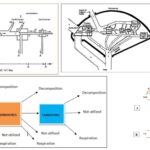IB Biology 32 Views 1 Answers
Sourav PanLv 9November 9, 2024
What happens during the depolarization and repolarization phases of an action potential?
What happens during the depolarization and repolarization phases of an action potential?
Please login to save the post
Please login to submit an answer.
Sourav PanLv 9May 15, 2025
During an action potential, neurons undergo two critical phases: depolarization and repolarization. These phases are essential for the rapid transmission of electrical signals along the neuron.
Depolarization Phase
- Initiation of Action Potential:
- Depolarization begins when a stimulus causes the neuron’s membrane potential to reach a threshold level, typically around -55 mV. This threshold is crucial because it determines whether an action potential will occur.
- Opening of Sodium Channels:
- Once the threshold is reached, voltage-gated sodium (Na++) channels open rapidly, allowing Na++ ions to flow into the neuron. This influx of positively charged sodium ions causes the membrane potential to become more positive, leading to further depolarization.
- Positive Feedback Loop:
- As more Na++ channels open, more sodium enters the cell, creating a positive feedback loop that rapidly increases the membrane potential, often peaking at around +30 mV. This phase is characterized by a swift rise in voltage and is often described as an “all-or-nothing” event—once initiated, it proceeds fully without diminishing.
Repolarization Phase
- Inactivation of Sodium Channels:
- Shortly after reaching the peak of depolarization, the Na++ channels begin to inactivate (close), halting the influx of sodium ions. This inactivation is crucial for stopping further depolarization and initiating repolarization.
- Opening of Potassium Channels:
- Concurrently, voltage-gated potassium (K++) channels open, allowing K++ ions to exit the neuron. Since there is a higher concentration of K++ inside the cell compared to outside, this efflux of potassium ions contributes to restoring the negative membrane potential.
- Return to Resting Potential:
- The outflow of K++ leads to a decrease in membrane potential back toward resting levels (approximately -70 mV). However, potassium channels may remain open slightly longer than necessary, causing a temporary overshoot known as hyperpolarization, where the membrane potential dips below the resting level (around -80 mV) before stabilizing back at rest
0
0 likes
- Share on Facebook
- Share on Twitter
- Share on LinkedIn
0 found this helpful out of 0 votes
Helpful: 0%
Helpful: 0%
Was this page helpful?




